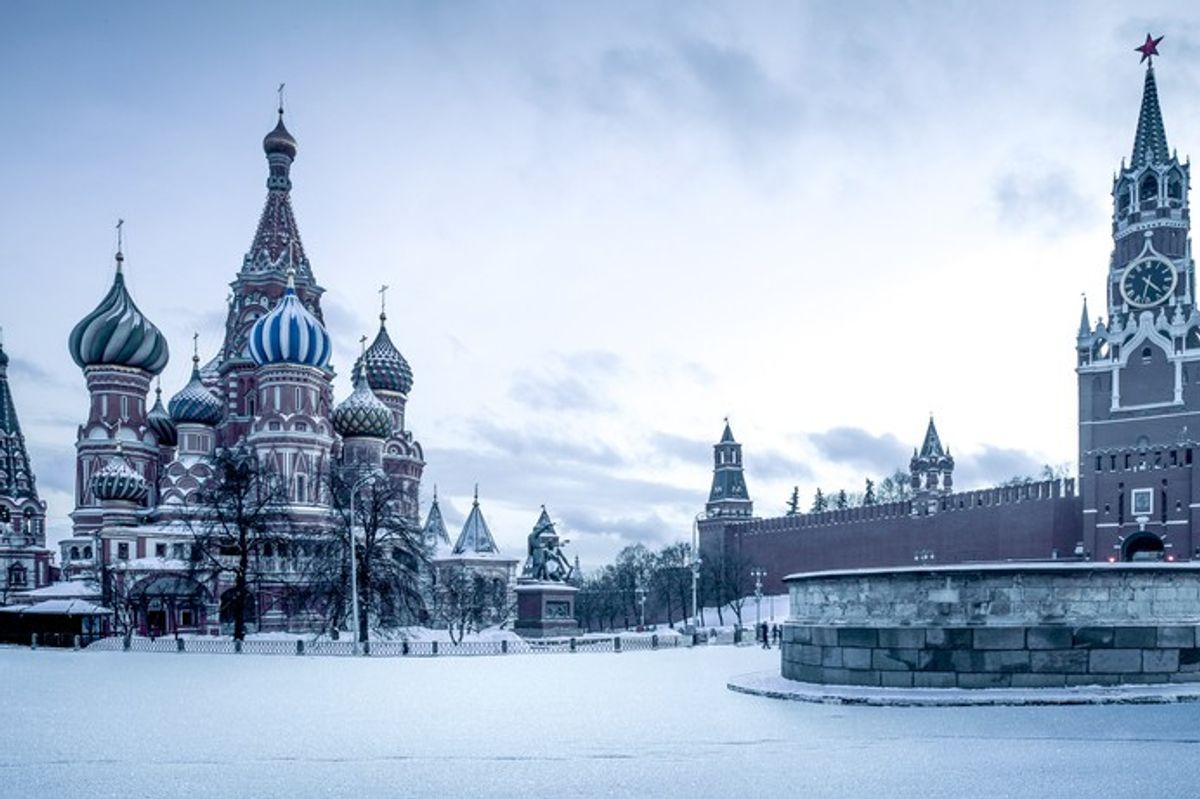OPINION — Many moons ago, when I started my training as an operations officer, the world and country were in a different place. Everyone I knew accepted the Earth was round. It was understood Russia represented the preeminent national security threat to the United States and that invading sovereign nations was an unequivocally bad thing. People who were patriots just stepped up and served their country and that was that. Ball caps had nothing to do with it.
CIA training and development were also different back then: I leapt out of a perfectly good airplane half a dozen times; fast-roped out of a helicopter; zeroed the sights on long-guns; halved trees with detcord; and drove a car 45 mph backwards, jacked a power turn, and smashed through a roadblock.
I never did any of these things in real ops situations during my career. It was never even a notion. It was all training that had a purpose.
The airborne training was all about taking officers out of their comfort zone, equipping them with the skills they needed, and having them gain confidence when indeed they saw full canopy and managed to land without tearing an ACL. It worked on me, someone who doesn’t love planes or heights. I am proud that I got through that, but never once since have I wanted to do it again.
The rest of it I loved and value to this day. Fast-roping? Cool as hell, confidence building, gives you cool scars. Weapons training? Confidence, skillset, and enough to know what to do to stay out of the way of the real pros when things get bad. Driving training? That was more practical, because you never know, and at the very least I was prepared to deal with dangerous roads, horrific traffic, and Tesla drivers.
It's ironic of course that the espionage portrayed in pop-culture usually reflects exaggerated training scenarios vice the more terrestrial day to day of spycraft, but it’s understandable. My roadblock stories get a much better response than “one time I marked a wall with purple chalk.”
It's not just for the President anymore. Are you getting your daily national security briefing? Subscriber+Members have exclusive access to the Open Source Collection Daily Brief, keeping you up to date on global events impacting national security. It pays to be a Subscriber+Member.
But tradecraft has its own drama. I did once leave my house at dawn with a particularly heavy and valuable backpack and carried it around for many hours until I could pass it off in exchange for vital information. I spent half-a-day confirming I did not have surveillance, changed my clothes four times, took six taxis, walked a dozen miles, ate four protein bars, smoked a pack of cigarettes, pretended to be drunk, ate instant coffee grounds, and at some point, made a chalk mark X on a brick wall and then spent the next six hours panicked that maybe it was supposed to have been a circle. When I arrived home at the end of this, no one saw me, just as (assumingly) no one saw me when I left. That’s how it is. You do your thing and then you write it up.
In a Chalk Marks world, the ops-day details are every bit as exciting, stressful and dramatic as the training exercises I recall, but I will be the first to admit they are nowhere near as visually imaginative and exhilarating as the training scenarios. This is chief among many reasons why pop culture representations of espionage lean heavy into heroics, physical risk, and impossible missions, because that is where the fun is. I might be a “sticks and bricks” former spy at heart, but I am also a huge fan of the creative storytelling that sells books and fill theaters and brings recognition to the trade.
Chalk mark operations are sexy, but they are most often done by your neighbor or sister-in-law, who always regret their third martini and on occasion, eat the kids’ mac and cheese out of the pot. I love for people to conflate my professional life with James Bond when it’s convenient for me (at bars and parent-teacher conferences), but I also want fans of espionage (and Chalk Marks) to recognize the true tradecraft fundamental to espionage thrillers and if possible, get a sense of what real spies are doing every day across the globe.
It is this tradecraft vs. thriller tension that makes me such a fan of the classic espionage film Spy Game. Spy Game is a great spy movie and a pretty good chalk marks film. It’s Robert Redford and Brad Pitt as spies, neither of them ever better looking or more charming than in these roles, which is saying something. Redford’s wrinkles have more charisma than the rest of the supporting cast, who seem perpetually annoyed that Redford is a thousand times cooler than the lot of them combined.
Spy Game is Director Tony Scott’s most specific espionage thriller, and it’s his distinctive action movie directorial style – amazing faces talking scene, dudes in a room scene, action scene, repeat – that finds a nice balance between storytelling and thrills.
This is a hallmark of Scott’s best films, Top Gun, Crimson Tide, and True Romance, and it finds gold in espionage. The “faces talking serious stuff Tony Scott award” might go to Denzel Washington and Gene Hackman in Crimson Tide, but I would happily watch Redford and Pitt talk espionage for hours. The movie absolutely cooks when these two are on screen together. The film starts fast and is always clever, but the witty conference room banter and suits posing as intelligence professionals suffer by comparison to the energy between Redford and Pitt.
Spy Game’s premise, plot, and action all lean thriller, but there is an extended series of scenes about 35 minutes into the film that is one of the best tradecraft collages in film. Spy Game uses bear and cub mentorship as means to cover all the important espionage soft skills you can think of. It’s both literary exposition and moviemaking magic, and the combination is why Spy Game is so effective.
What national security news are you missing today? Get full access to your own national security daily brief by upgrading to Subscriber+Member status.
This expository carving into the flesh of espionage is what brings the rest of the conventional thriller film to life. Redford and Pitt at the bar talking spy stuff – Redford’s wizened and jaded soul, Pitt’s young cub eagerness – reflects a bromance version of mentoring moments that have happened in Beltway bars, European cafes and back-alley speakeasys for decades.
These collage scenes, in Europe and Lebanon, cover some of my favorite chalk mark tradecraft – gap acts, asset car pick-ups, elicitation, and verbal paroles – but it is best with the sensibilities of a life in espionage.
Redford’s character Nathan Muir vacillates between offering recruit Tom Bishop (Pitt) fatherly wisdom and Chief of Station-level tough love, but there’s never much doubt about which virtue will win out in the end. Spy Game covers the familiar ground of the tension between service and sacrifice, self and mission, asset and family, but watching Redford and Pitt wrestle with these tensions and each other is what makes the film as good as it is.
Spy Game also has two of my least favorite CIA tropes – the rogue spy and inter-office knife fighting – but they are in service to the larger thriller elements and there is enough dedication to assets and colleagues to win the soul of the film.
No one jumps out of a plane, but rifle-sights are zeroed, cars are driven fast, and there is enough fast-roping to keep the balance between thriller and espionage. Not many films find the balance of Spy Game, few even try, and this is reason enough to place it among the most enjoyable of spy films.
So, if you’ve never seen Spy Game, or it has been a while, queue it up for Redford and Pitt, but appreciate the chalk marks. As always, I offer below my own “ops plan” to get you started:
- Primary viewing window: Date Night – Redford and Pitt aren’t the only romance;
- Alternate viewing window: back-up Date Night – debate who has bluer eyes;
- Beverage: Scotch, never younger than twelve years old;
- Snacks: Migas; never bubble gum.
- Post-viewing Song: Dinner Out, Lucy Wainwright and Suzzy Roche – it works on several levels, trust me;
- Post-viewing Book: Agents of Innocence, David Ignatius (a classic of the genre, it’s right on point on multiple levels).
The Cipher Brief is committed to publishing a range of perspectives on national security issues submitted by deeply experienced national security professionals.
Opinions expressed are those of the author and do not represent the views or opinions of The Cipher Brief.
Have a perspective to share based on your experience in the national security field? Send it to Editor@thecipherbrief.com for publication consideration.
Read more expert-driven national security insights, perspective and analysis in The Cipher Brief














